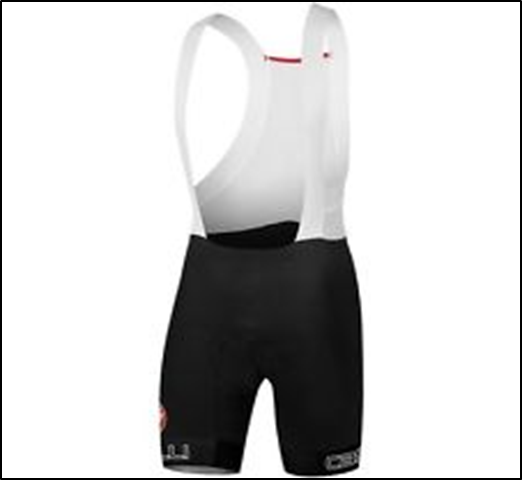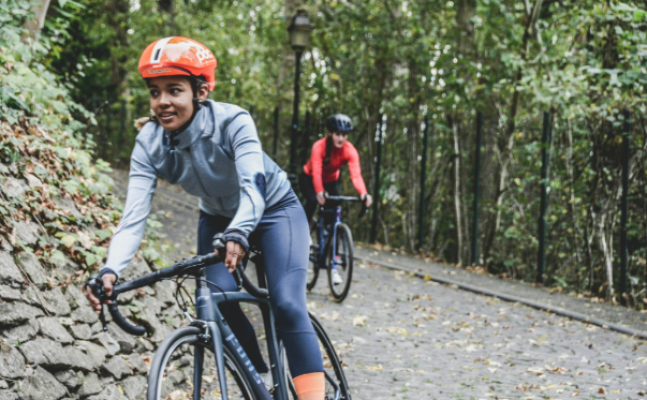Cycling Kit Information
Introduction
The kit list found in your account hub will detail everything that you need to bring with you on your challenge. The kit list forms part of our safety procedures and items have been specified with your welfare in mind. Anyone failing to carry essential items during the cycle may not be permitted to take part. If the kit is marked as ‘Optional’ or ‘Recommended’ it is your choice whether you bring it or not, these are suggested items that we feel will be of some benefit to you during the challenge. Here are a few of the really important items on the kit list that you should consider investing in:
Clothing
Base layer
There is no need for a base layer. Your lightweight cycle jersey will act as a base layer.
Bib shorts
We would recommend bib shorts. The waistband of regular cycling shorts can dig in, whereas bib shorts forego the waistband by using shoulder straps to keep the shorts up and in place which is more comfortable and more supportive when cycling. Comfortable bib shorts are essential as you will be spending a long time in the saddle. So along with fit, the chamois (the vast majority are now synthetic) is the essential ingredient to happy cycling. One rider’s armchair is another’s bed of nails but there’s plenty of choice to find a pad insert that works for you. Look for a pad which has anti-bacterial properties, is breathable (often with channels or perforations to draw sweat away) and has a multi-density construction (placing more foam padding where it’s needed). As shorts are the only padding between your bum cheeks, the saddle and the road, it’s worth investing in a good pair of shorts.

It is recommended not to wear underwear with cycle shorts. Cycle short designers put a lot of research into designing shorts to be as comfortable as possible. Therefore, wearing underwear can cause chafing between the pad and your skin. Long consecutive days of cycling could still cause you some discomfort so apply a saddle cream from day 1 of your challenge. There are lots of different brands out there - ‘Assos chamois cream’, ‘Udderly Smooth’ or even ‘Metanium’ or ‘Bepanthen’ nappy rash cream will help.
Our recommendation regarding saddle sore cream is to use it daily, start before you think you need it on day 1.
Short sleeved jerseys
A lightweight, technical short sleeve jersey is important in hot weather to move moisture away from your body, keeping you dry on hot days rather than drenched in sweat. Man-made, synthetic fabrics come into their own in hot humid weather. Fit is personal but look for a jersey which sits close to the skin and is therefore more aerodynamic while allowing the technical fabric to do its job.
Due to the climate on some of our challenges it can be very difficult to get cycling kit and clothes dry overnight, so space permitting we would recommend you bring as many spares cycling clothes as possible
We would recommend you pack one full cycle kit in your hand luggage just in case your main luggage goes missing. It will probably fold inside your helmet.
Helmet
Your helmet can be a life saver, so make sure it fits properly. Low, level and snug, that's how your helmet should sit on your head. Below are a few tips on how to get a perfect fit.
Your helmet should sit level on your head and the front of the helmet should cover most of your forehead. If the helmet tilts back and exposes your forehead, it's not going to protect you. Connect the chin strap and tighten it so that it's snug beneath your chin, you should not be able to pull the chinstrap forward over your chin when fastened. Adjust the side straps so that the point of the V sits just below your ears. In the end, you shouldn't be able to move the helmet more than an inch in any direction.

Cycling shoes and cleats
When cycling, it is highly beneficial to wear cycling shoes, whether it be with or without cleats. The main problem with cycling in trainers is that they’re far too flexible and this results in your feet constantly having to flex which can result in uncomfortable soreness in your feet. With every pedal stroke some power is lost as your shoe flexes and combined with the soreness you may experience you will begin to lose momentum and speed. Stiff-soled cycling shoes solve all these problems and ensure that the maximum amount of power finds its way from your legs into the pedals and ultimately onto the road.
Cycling with cleats is highly beneficial although not essential. When you cycle without cleats you can only push the pedals down, but when using cleats you also have the ability to pull the pedal up. Cleats will help you if you find your muscles aching, as you will also be pulling the pedals up so you could use 30% less energy and still be traveling at the same speed.
You need to have the knack of wearing cleats, so please ensure you do plenty of training beforehand if you decide to use them. If you are new to using cleats, we would suggest to start out using MTB (mountain bike) cleats as these are the easiest to learn to use. Don’t try and learn to use cleats on the challenge itself.
You will only be riding mountain bikes on this challenge so there is no need to bring road bike cleats.







